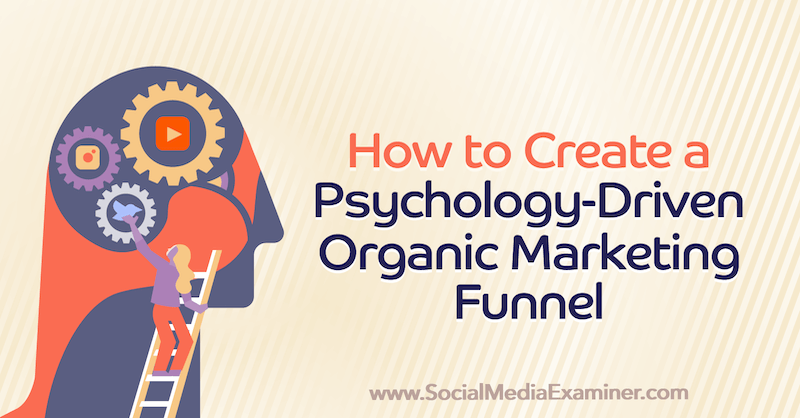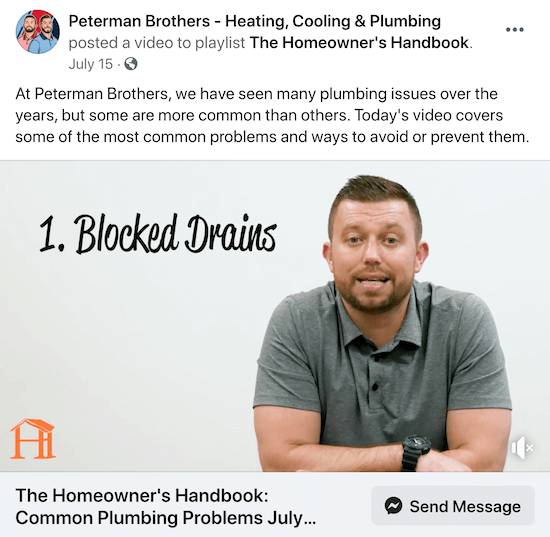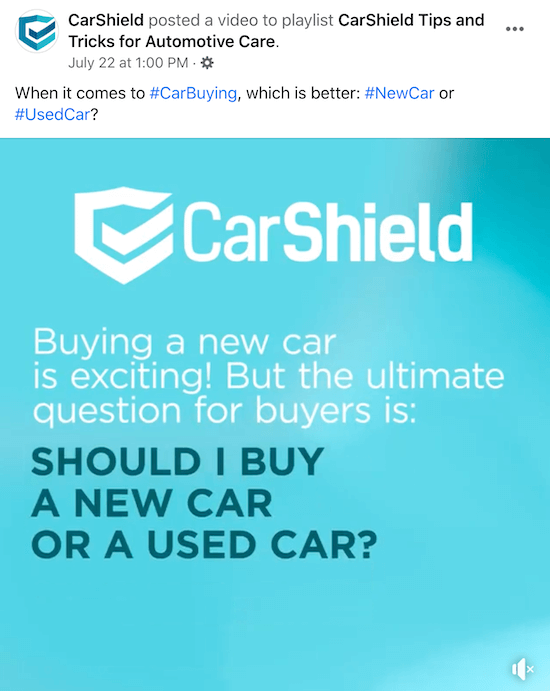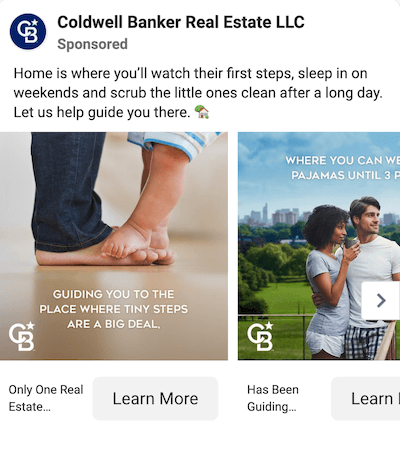Is your marketing funnel working as well as it could? Wondering where organic content fits into the customer journey?
In this article, you'll discover how to use psychology to enhance your organic social activities so they develop and nurture your audience.

Why Marketing Funnels Are so Important Today
Marketing funnels are a strategic path laid out by a brand or business to help guide their prospects from where they are in their customer journey to the next step—whatever that step may be.
In a psychology-driven marketing funnel, marketers and brands rely on consumer psychology; that is, the way people engage and interact and consume content.
Anyone who has ever purchased anything goes through a sales funnel. There's a path a marketer or brand set up to help the prospect realize the offer was of value and move them forward to making a purchase. By using psychology-driven sales, marketers begin to design their marketing strategies and processes around the way people naturally process information and make their buying decisions.
On the other side of a marketing strategy are relationships. Building a relationship between a marketer and a customer takes time. A consumer would rarely come in at step zero ready to purchase something they didn't even know they needed.
Typically, there will be a period when the consumer first learns about a problem and starts looking for the solution before they're ready to make a purchase. Therefore, the time spent engaging with a consumer from the first point of contact up to the decision point at which they made a purchase is all about building and nurturing that relationship.
It's about letting consumers get to know, like, and trust that you as a marketer and brand are able to understand their struggles, offer real solutions, overcome their objections, and convey that you're the right person or brand to give them the solution they need.

The Connection Between Organic Marketing and Funnels
The interesting thing about organic marketing—public marketing done on a social platform—is that marketers can't just focus on one stage of their customer journey. With things like landing pages and email segmenting, it's possible to narrow down your focus to speak to someone at the exact right step within their customer journey.
But on a public platform, prospects may be viewing your content from different stages within their customer journey. People at the very beginning of the customer journey may not be as aware of their problem or need for a solution as someone who's further along on that journey.
As you put together the content for your organic funnels, you'll need to look at stages where your audience is going to be and then decide where you can drive traffic. For example, with organic marketing, you could place your content at the top of your funnel. You have organic content that gets shown via the social algorithms. You could also have organic content that gets shared via a referral.
Either way, that organic content is still going to facilitate the customer journey you're trying to walk your audience through.
Top of the Funnel—Attention
People at the top of your funnel don't know very much about the problem they have, the solution you offer, or you as a business. So you may want to consider what type of content you could put in front of someone new that might give them the next piece of the puzzle: a listicle, quiz, or article. Something that's easy to consume, is low commitment on the part of the consumer, and something they'll grab and tuck away to read.
Get World-Class Marketing Training — All Year Long!
Are you facing doubt, uncertainty, or overwhelm? The Social Media Marketing Society can help.
Each month, you’ll receive training from trusted marketing experts, covering everything from AI to organic social marketing. When you join, you’ll also get immediate access to:
- A library of 100+ marketing trainings
- A community of like-minded marketers
- Monthly online community meetups
- Relevant news and trends updates

Middle of the Funnel—Engagement
In the middle of the funnel, people are becoming more aware of the effect that this problem has on their business or life, and that there's a solution available. They've started to recognize you as someone who has the solution, and they've started engaging with you on at least one of your platforms.
You may want to consider the type of contact you could put in front of someone who's already starting to get to know, like, and trust you to take the next step—usually a private platform such as a website or even a course away from the noise of social media.
Bottom of the Funnel—Conversion
People who've gone all the way through the funnel to the bottom are much more aware of the problem, the effect that the problem has on their business or life, what they need to do to fix it, and that you're the person to help them do it. They've engaged with you the longest, connected with you the most, and associated your brand with a solution they need.
A Psychology-Driven Sales Strategy to Guide Your Audience to the Next Level
Adam's Everlaunch strategy is the marriage between an intermittent launch strategy, in which an offer is only available for a limited time, and an evergreen strategy, in which an offer is available all the time.
In psychology-driven sales, this strategy is a way to present your information and address your audience that's effective and ethical. It works because it meets people where they are. It takes them by the hand and guides them to where they want to go. It identifies their problems, identifies where they want to go, and then positions you and your business as a solution for them.
It does this by spreading out your messages. In other words, you can help overcome your prospects' obstacles as they come up, helping your audience every step of the way, all while having them self-identify and make micro-commitments. By playing on different cognitive biases and heuristics, you help the consumer become aware of their problem and their need for the solution you offer.
By tapping into these known psychological tendencies that drive consumer decision-making, marketers are able to help their audience move from one step to the next through their organic sales funnel.
#1: Condition the Market
The very first step is to provide a platform to your audience. You can condition your customers and prospects to start taking action and identifying the problems they have. And you do this by establishing a connection that makes your customers feel like you understand them and what they're going through. You help them identify the problem first.
There's an interesting psychological phenomenon that happens when you're the one who's able to accurately describe the problem your audience has. Once you describe this problem, your audience will naturally associate you with the solution for it.

#2: Help Your Audience Self-Identify as Having the Problem You Can Solve
Next up is to proceed with a statement of agreement. In this step, you're going to help your audience self-identify as having the problem you described in the first step. It's one thing for you to approach your audience and say they have a problem, and quite different if they can look at you and agree with you and tell you they indeed have that problem.
This agreement and self-identification is, in and of itself, a micro-commitment. Now they've solidified that association they made between you and the solution, and they feel connected to you because you've established that you understand not only what they're going through but also what they need to solve it.

Discover Proven Marketing Strategies and Tips
Want to go even deeper with your marketing? Check out the Social Media Marketing Podcast! Publishing weekly since 2012, the Social Media Marketing Podcast helps you navigate the constantly changing marketing jungle, with expert interviews from marketing pros.
But don’t let the name fool you. This show is about a lot more than just social media marketing. With over 600 episodes and millions of downloads each year, this show has been a trusted source for marketers for well over a decade.

#3: Prime Your Audience to Be Receptive to Your Offer
The next step is to prime your audience. To prime someone is to help prepare them for a particular situation so should a situation come up, they know exactly what to do. In marketing, this is the step in which we actively but invisibly and ethically influence our customers' mindset, beliefs, and attitudes.
When done right, marketers can tap into proven scientific and human behavior principles from neurobiology and psychology to evolutionary anthropology and behavioral economics to leverage cognitive biases. When we do this, primarily through storytelling, by priming different schemas within the customer's mind that will help make them more open and receptive to whatever it is we're offering.
Essentially, telling your audience about a time in which you had to suddenly pivot can subtly prime your audience to be more open to change and more receptive should they need to pivot in the future.
#4: Tackle Fears, Uncertainty, and Doubt
The fourth step is promote, and this is the step we've all been working toward. At this step, you've earned the right to place your offer directly in front of your audience, who, by this point, is practically begging to buy or enroll or sign up for the solution they're after.
Because of the time spent in the first three steps, consumers at this step feel heard, acknowledged, respected, and cared for by you. However, they also still have a few concerns and doubts about whether your solution will truly work for them.
During this step, you want to tackle those objections and questions head-on by presenting your offer in a way that allows them to overcome their objections, increase their desire for your solution, and build even more anticipation for your offer.
The most effective way to accomplish this is to identify all the miseries, pain points, problems, fears, and frustrations that your audience is trying to move away from. Then identify those miracles, wants, dreams, and goals your audience is trying to move toward.
During this phase, your job as a marketer is to help bridge the gap away from the miseries and toward the miracles. Essentially, you want to remind your audience about where they are and why they don't like it, and then show them what it will be like once they get to where they want to be.

#5: Ramp Up Ethical Scarcity
After your promotion, then it's time to push.
In a traditional launch, the push would happen during the final 24 hours of a full-on promotion, just before the cart closes. During an evergreen-style promotion, marketers will want to find a way to ramp up ethical scarcity.
There are a couple of ways to do this:
- Add and remove bonus offers from time to time.
- Increase the price of your offer over time.
The idea of ethical scarcity is to create a reason for people to act immediately on your offer. When given the choice between acting now or acting later, most people will act later unless given a compelling reason to act now. By providing a level of exclusivity or limited numbers, you give your audience a compelling reason to act now.
#6: Provide Alternative Options to Those Who Didn't Buy
Once the promotion is over, the final push is done, and the cart has closed, it's not time to close up shop just yet. There's still a large segment of your audience that wasn't able to act on your offer for one reason or another.
There's still a massive opportunity to serve this segment of your audience. And you've already primed them, connected with them, and established their trust in you, so why wouldn't you want to capitalize on that?
One thing you can do at this point is to offer that audience segment alternative options. Depending on your price point, you can try an upsell, in which you offer a more exclusive deal at a higher price point, or a downsell in which you offer something at a lower price point. You can also go with a cross-sell or an affiliate offer.
It doesn't really matter which way you point people, the idea is to point them to an alternative solution that may be a better match for them than your recent promotion was.
#7: Take a 2-Week Cooldown Period
When all is said and done, then it's time to press pause. Typically, during any sort of launch or promotion, you're pushing out a lot of content, connecting with a lot of people, and moving those people from one stage to the next. There's a lot of psychological and mental energy being spent during that time.
Depending on how long that promotional window lasted, you'll want about a 2-week cooldown. Go back to providing some value, connecting on a deeper level, and planting the seeds for the next launch or offer—just hints, nothing heavy. The idea here is to keep your audience engaged with you and wanting to hear about what comes next without bludgeoning them over the head with your next offer.
Adam Erhart is a marketing strategist who helps small-business marketers with their content marketing and psychology-driven sales strategy. Connect with Adam on his YouTube channel.
Other Notes From This Episode
- Looking for an easier way to scale your eCommerce sales? Visit wix.com/ecommerce to create your store and drive sales today.
- Check out the videos and resources Adam mentioned at adamerhart.com/sme.
- Learn more about Deadline Funnel.
- Check out the Social Strategy Club at socialmediaexaminer.com/club.
- Connect with Michael Stelzner at @Stelzner on Instagram.
- Watch exclusive content and original videos from Social Media Examiner on YouTube.
- Tune into our weekly Social Media Marketing Talk Show. Watch live on Fridays at noon Pacific on YouTube. Listen to the replay on Apple Podcasts or Google Podcasts.
Listen to the Podcast Now
This article is sourced from the Social Media Marketing Podcast, a top marketing podcast. Listen or subscribe below.
Where to subscribe: Apple Podcasts | Spotify | YouTube Music | YouTube | Amazon Music | RSS
❇️ Help Us Spread the Word! Please let your Twitter followers know about this podcast. Simply click here now to post a tweet.
✋🏽 If you enjoyed this episode of the Social Media Marketing podcast, please head over to Apple Podcasts, leave a rating, write a review, and subscribe.
Attention Agency Owners, Brand Marketers, and Consultants

Introducing the Marketing Agency Show–our newest podcast designed to explore the struggles of agency marketers.
Join show host and agency owner, Brooke Sellas, as she interviews agency marketers and digs deep into their biggest challenges. Explore topics like navigating rough economic times, leveraging AI, service diversification, client acquisition, and much more.
Just pull up your favorite podcast app, search for Marketing Agency Show and start listening. Or click the button below for more information.

